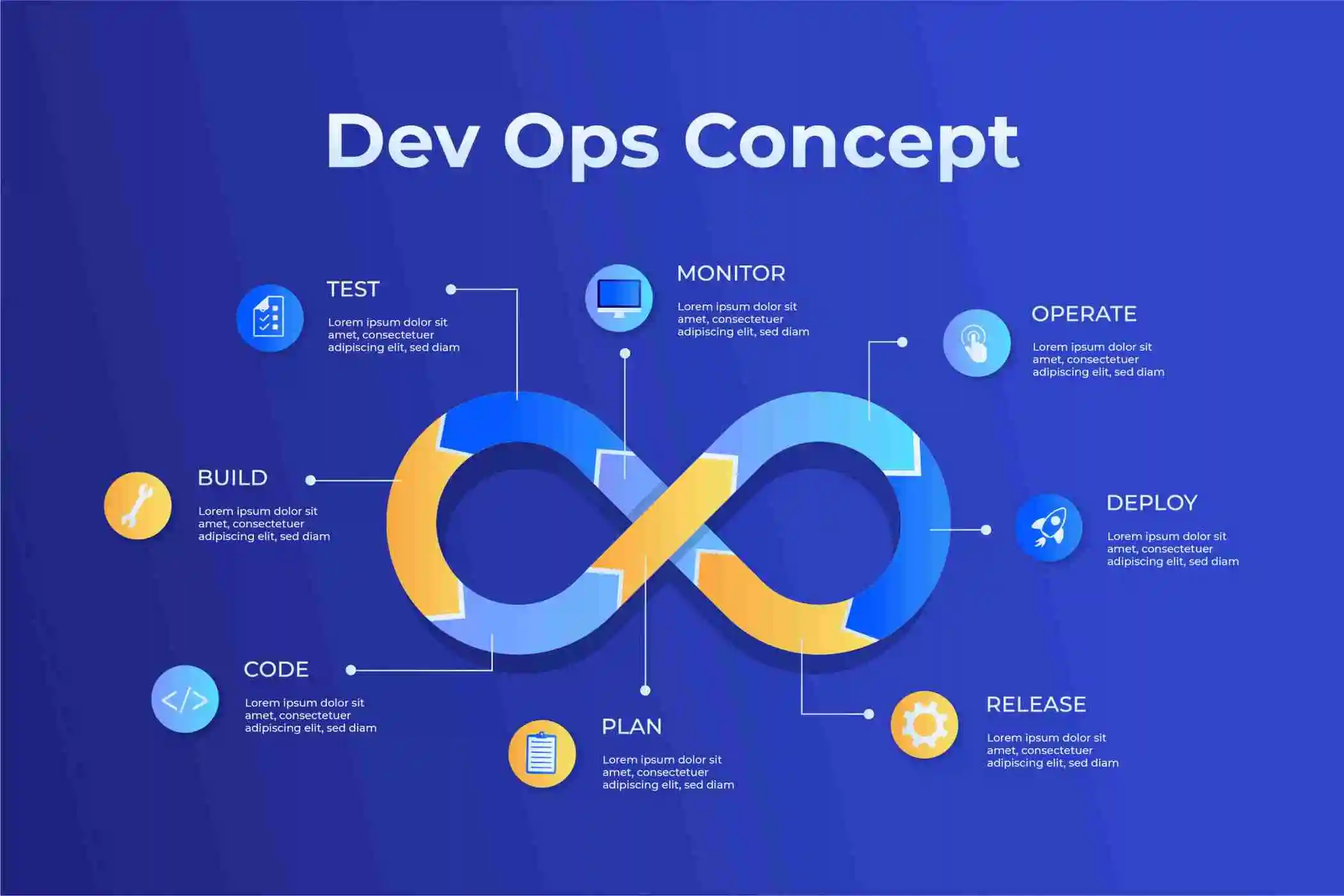DevOps Explained: A Guide to Streamlined Development
Modern software development demands speed, precision, and collaboration. As technology continues to evolve, businesses are finding it critical to align their development and operations teams to stay competitive. Enter DevOps, a methodology that bridges gaps between development, operations, and other IT disciplines. 
This guide unpacks the essence of DevOps, its benefits, core principles, and how organizations can effectively implement it to achieve streamlined development.
What Is DevOps? Understanding the Basics
At its core, DevOps is a cultural and technical movement aimed at enhancing collaboration between software developers and IT operations teams. It’s not merely a set of tools or processes it’s a philosophy that emphasizes integration, communication, and automation.
Origin of DevOps:
The term "DevOps" merges "Development" and "Operations," symbolizing the unification of two traditionally siloed teams. It emerged in the late 2000s, coinciding with the rise of Agile methodologies.
The DevOps Lifecycle:
The lifecycle focuses on continuous development, integration, testing, deployment, and monitoring. This cyclical approach ensures rapid delivery and iterative improvement of software products.
Key Characteristics:
- Collaboration: Breaking down silos to encourage cross-functional teamwork.
- Automation: Streamlining repetitive tasks for consistency and speed.
- Continuous Feedback: Enabling constant improvement through monitoring and user feedback.
Why DevOps Matters: The Benefits of Implementation
Implementing DevOps brings significant advantages for businesses striving for efficiency and agility in their development processes. Below are some of the critical benefits of adopting this approach.
Faster Time-to-Market:
By automating processes and integrating teams, DevOps enables organizations to deliver software updates and features faster than traditional methods.
Improved Collaboration:
Developers, operations, and other stakeholders work cohesively, fostering a shared sense of responsibility for the product.
Higher Quality Outputs:
- Automated testing ensures minimal errors.
- Continuous monitoring identifies issues before they escalate.
Enhanced Customer Satisfaction:
Faster deployments mean quicker responses to customer needs and a better overall experience.
Operational Efficiency:
By reducing manual tasks, DevOps minimizes errors and increases consistency, allowing teams to focus on innovation.
Core Principles and Tools of DevOps
DevOps isn’t a one-size-fits-all solution; its success relies on certain guiding principles and leveraging the right tools. Below are the foundational elements and technologies that drive effective DevOps practices.
Principles Guiding DevOps
Automation:
Automating routine processes like testing, integration, and deployment saves time and ensures reliability.
Continuous Everything:
The emphasis on continuous integration, delivery, deployment, and monitoring ensures software remains up-to-date and functional.
Cultural Shift:
A shared mindset of collaboration and accountability is critical for breaking down barriers between teams.
Feedback Loops: Rapid feedback mechanisms allow teams to identify bottlenecks and adapt quickly.
Essential Tools for DevOps
The DevOps ecosystem includes numerous tools catering to different stages of the lifecycle. Some of the most popular categories and tools include:
- Version Control: Git, GitHub, GitLab
- Continuous Integration/Continuous Deployment (CI/CD): Jenkins, CircleCI, GitHub Actions
- Containerization and Orchestration: Docker, Kubernetes
- Monitoring and Logging: Prometheus, Grafana, Splunk
- Infrastructure as Code (IaC): Terraform, Ansible, Chef
How to Implement DevOps Successfully
Adopting DevOps requires more than just deploying new tools; it’s about fostering a mindset and building processes that support collaboration and efficiency. Here are steps to guide successful implementation.
Building the Right Culture
DevOps thrives on a collaborative culture. Organizations must encourage open communication, transparency, and shared responsibility. Regular training and workshops can help team members adapt to this new way of working.
Starting Small, Scaling Gradually
It’s best to begin with a pilot project that showcases the potential benefits of DevOps. Gradually expanding these practices across teams allows for smoother transitions and less resistance.
Investing in Automation
Automation is the backbone of DevOps. Start by automating repetitive tasks like code integration, testing, and deployments to free up time for strategic initiatives.
Measuring Success
Establishing KPIs helps evaluate the effectiveness of DevOps initiatives. Metrics like deployment frequency, lead time, and system reliability are valuable indicators of progress.
Continuously Improving
DevOps is an iterative process. Regular retrospectives and incorporating feedback loops ensure your processes evolve alongside business needs.
Conclusion
DevOps is more than just a buzzword; it’s a transformative approach that has redefined how organizations deliver software. By fostering collaboration, streamlining processes, and emphasizing automation, DevOps helps businesses achieve faster time-to-market, improved product quality, and enhanced customer satisfaction. For companies willing to embrace its principles and invest in the right tools, DevOps paves the way for sustainable growth and innovation in the digital era.
References
- What is DevOps? A Comprehensive Guide
- DevOps Principles Explained
- The State of DevOps Report
- Tools and Frameworks for DevOps
- How to Build a DevOps Culture
- Continuous Delivery Explained
- Automation in DevOps
- Infrastructure as Code Best Practices
- DevOps Metrics for Success
- Top Challenges in DevOps Adoption




















































![[ℕ𝕖𝕧𝕖𝕣] 𝕊𝕖𝕝𝕝 𝕐𝕠𝕦𝕣 𝔹𝕚𝕥𝕔𝕠𝕚𝕟 - Is Trump Dying? Or Only Killing The Market?](https://cdn.bulbapp.io/frontend/images/a129e75e-4fa1-46cc-80b6-04e638877e46/1)






